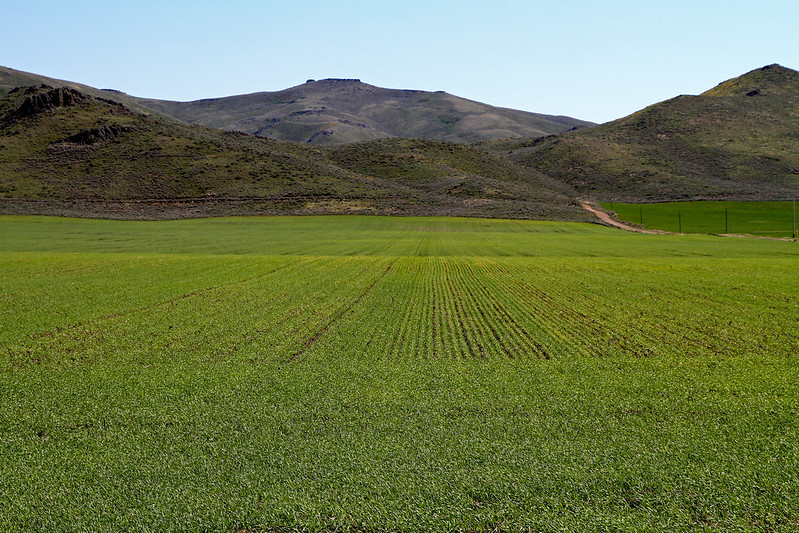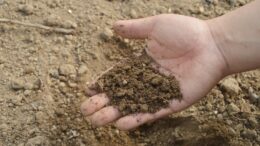Tackling the biodiversity crisis may mean starting small — very small.
The life we can’t see is some of the most threatened, say researchers of a new study in Nature Microbiology. And those microbial organisms — tiny bacteria, fungi and viruses that live in the soil — are fundamental to our existence.
“A functioning Earth without a functioning microbiome is nearly unimaginable,” they write.
But soil microbes today are at risk of extinction and homogenization. A wide variety of environmental changes has spurred these losses, including deforestation, intensive agriculture, pesticides, soil compaction and soil sealing.
There’s also the threat from “accelerated co-extinction” — as host plants decline, so do their specialized microbial networks.
The Earth microbiome urgently needs our defense, the researchers urge in their study. And they provide three avenues to help do just that.
“We need to conserve, we need to restore and we need to integrate microbes into managed landscapes,” says study co-author Tom Crowther, a professor of environmental systems science at ETH Zürich. “The belowground world is exactly as important as the aboveground world. It’s also exactly as diverse.”
The first step to conservation is data collection, so we know what exists where and how it’s changing over time.
Thousands of soil ecologists all over the world are engaged in this process, which has been streamlined by the use of DNA sequencing.
“By compiling all of those data sets, you can start to see the patterns in microbial communities across the globe,” says Crowther. “Then we link it up with satellite observations and climate information to look at the correlations.”
But we need to devote more effort to quantifying and mapping the Earth’s existing microbiome to identify knowledge gaps and emerging threats. The researchers note several projects already underway attempting to do just that, including SoilBON, the Global Fungi Database and the Earth Microbiome Project.
But while data availability has exploded, they warn that “there are clear and persistent sampling gaps in our global picture of the Earth microbiome.” There’s still a lot we don’t know and many places where data doesn’t yet capture a long-term picture that can help identify decline. Places where we lack information include the northern parts of Canada and Russia, the Amazon, southeast Asia, and the entire African continent.
This information could aid efforts to include microbial biodiversity in conservation planning and in the International Union for Conservation of Nature Red List of species in need of conservation, the researchers say.
In the second step, the research shows that ecological restoration efforts should include attention to restoring microbiomes.
Restoration can take place by allowing nature to regenerate on its own, but that can also be an incredibly slow process. There’s now evidence that active microbiome restoration — which includes mixing microbial spores into water and spraying the landscape or using soil inoculants that contain microbes— can help the speed and resiliency of ecological restoration projects.
The researchers reviewed the findings of dozens of previous studies that examined these practices and found that restoring native microbial communities helped boost plant growth by an average of 64%.
This kind of restoration can be used not just for natural landscapes, but also those managed for agriculture.

Managed landscapes are “a vital and underappreciated avenue to promote microbial biodiversity,” the researchers write, and exploring the possibilities of microbial restoration in these areas is the third avenue the study recommends.
Efforts should be made, they say, to identify diverse, native microbiomes that can be restored to fields and forests managed for agriculture, which covers nearly half the planet’s land.
For farmers, the benefits are twofold. “Simply spraying these microbes — healthy, diverse mixtures across soils — increases your diversity within the system, will be beneficial in itself to farmers,” says Crowther, especially if incentives for promoting biodiversity become available in the future. And it can also help boost plant production.
That, he says, is “a rare example in ecology where we’ve got something that improves biodiversity and at the same time increases (crop) yields.”
The end goal of this work is for belowground ecosystems to receive the same attention as the ones aboveground, so we know how to appropriately restore them and protect them.
“If we manage a tropical forest the same way we manage a boreal forest, it wouldn’t work very well. So we manage them very differently,” he says. “We also need to be managing our soils relative to the variation in microbial biogeography. We need to understand those ecosystems if we’re going be able to manage them right.”
Crowther believes that’s starting to happen, but there’s still a long way to go.
Fungi have gotten the most attention so far, which is important, “but fungi are just the tip of the iceberg,” he says. “There’s a wealth of soil biodiversity that’s absolutely critical for the survival of everything on this planet — the bacteria, the nematodes and the soil animals that are essential.”
Despite an increasing awareness of the importance of protecting soil biodiversity, there’s still no strong conservation planning around it, says Crowther. “We really have to start getting serious about it — that’s the case for all biodiversity and particularly the belowground world.”
The next big chance to do that will be in December at the United Nations Biodiversity Conference, he says.
“I hope it will be a big turning point in the environmental movement for bringing biodiversity up to a place that’s as important as climate in our international policy governance.”
Get more from The Revelator. Subscribe to our newsletter, or follow us on Facebook and Twitter.
Previously in The Revelator:
‘Soil Isn’t Forever’: Why Biodiversity Also Needs Protection Below the Ground
![]()


